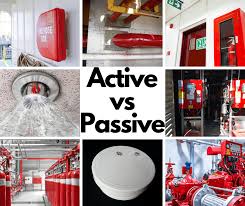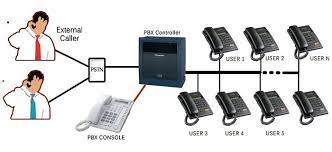Fire safety systems are essential components of any building or establishment to ensure the safety of occupants and prevent potential disasters. These systems consist of various equipment and measures designed to detect, suppress, and alert individuals in the event of a fire emergency.
One of the key elements of fire safety systems is the fire alarm system. This system includes smoke detectors, heat detectors, and manual pull stations strategically placed throughout the building to detect signs of a fire. When activated, these devices trigger alarms to alert occupants and authorities, allowing for timely evacuation and response.
In addition to fire alarms, fire safety systems also incorporate fire suppression equipment such as sprinkler systems. Sprinklers are designed to release water or other extinguishing agents when a certain temperature threshold is reached, helping to control or extinguish fires before they escalate.
Furthermore, fire safety systems may include emergency lighting and exit signs to guide individuals to safety during a fire emergency when normal lighting may be compromised. These features are crucial in ensuring clear pathways for evacuation and minimizing panic among occupants.
Regular maintenance and testing of fire safety systems are essential to ensure their reliability in case of an emergency. Building owners and managers should schedule routine inspections by qualified professionals to identify any issues or malfunctions that could compromise the effectiveness of these systems.
Overall, investing in robust fire safety systems is a critical aspect of building management and occupant safety. By implementing comprehensive measures such as fire alarms, suppression equipment, emergency lighting, and regular maintenance practices, buildings can enhance their preparedness for potential fire incidents and protect lives and property.
Essential Fire Safety Tips: Protect Your Home and Family
- Install smoke alarms on every level of your home.
- Test smoke alarms monthly and replace batteries as needed.
- Create a fire escape plan and practice it regularly with your family.
- Keep flammable materials away from heat sources.
- Have a fire extinguisher in key areas of your home, such as the kitchen and garage.
- Ensure all electrical wiring is up to code and not overloaded.
- Regularly maintain heating systems and chimneys to prevent fires.
- Teach children about fire safety and the importance of not playing with matches or lighters.
Install smoke alarms on every level of your home.
Installing smoke alarms on every level of your home is a crucial step in enhancing fire safety measures. Smoke alarms serve as early warning devices that can detect smoke particles and alert occupants to the presence of a fire. By having smoke alarms strategically placed throughout different levels of the house, you can ensure that any potential fire hazards are promptly detected, giving you and your family more time to evacuate safely. Remember to test your smoke alarms regularly and replace their batteries as needed to maintain their effectiveness in protecting your home from fire emergencies.
Test smoke alarms monthly and replace batteries as needed.
Testing smoke alarms monthly and replacing batteries as needed is a crucial tip for maintaining effective fire safety systems in any building. Smoke alarms play a vital role in detecting early signs of a fire and alerting occupants promptly. By regularly testing these alarms, individuals can ensure that they are functioning correctly and able to provide timely warnings in case of an emergency. Additionally, replacing batteries as needed helps to ensure that smoke alarms remain powered and operational at all times, enhancing the overall reliability of the fire safety system.
Create a fire escape plan and practice it regularly with your family.
Creating a fire escape plan and practicing it regularly with your family is a crucial step in ensuring preparedness and safety in the event of a fire emergency. By developing a detailed escape route that outlines exits, meeting points, and procedures for different scenarios, you can effectively minimize confusion and panic during a crisis. Regularly rehearsing the escape plan with all family members helps reinforce awareness and readiness, ensuring everyone knows what to do and where to go if a fire occurs. Remember, preparation is key to staying safe during emergencies, so make sure to prioritize practicing your fire escape plan consistently.
Keep flammable materials away from heat sources.
One crucial tip for fire safety systems is to keep flammable materials away from heat sources. Flammable materials such as paper, fabrics, chemicals, and fuels can easily ignite when exposed to heat sources like open flames, electrical appliances, or heaters. By maintaining a safe distance between flammable materials and potential heat sources, the risk of accidental fires can be significantly reduced. This simple yet important precautionary measure plays a key role in preventing fire hazards and ensuring the safety of occupants within a building or premises.
Have a fire extinguisher in key areas of your home, such as the kitchen and garage.
Ensuring that you have a fire extinguisher readily available in key areas of your home, such as the kitchen and garage, is a crucial fire safety tip. In the event of a small fire outbreak, having quick access to a fire extinguisher can help contain the flames before they escalate into a larger emergency. Placing fire extinguishers in strategic locations where fires are more likely to occur increases your preparedness and ability to respond effectively, potentially saving lives and property in the process.
Ensure all electrical wiring is up to code and not overloaded.
Ensuring that all electrical wiring is up to code and not overloaded is a crucial tip for maintaining effective fire safety systems in buildings. Faulty or overloaded electrical wiring poses a significant fire hazard, as it can lead to short circuits, overheating, and ultimately, fires. By adhering to electrical codes and regulations and avoiding overloading circuits, building owners can reduce the risk of electrical fires and ensure the safe operation of fire safety equipment such as alarms and sprinkler systems. Regular inspections by qualified professionals can help identify any potential issues with electrical wiring and address them promptly to enhance the overall fire safety of the building.
Regularly maintain heating systems and chimneys to prevent fires.
Regular maintenance of heating systems and chimneys is crucial in preventing fires and ensuring the safety of buildings and occupants. Over time, debris, creosote buildup, or mechanical malfunctions in heating systems and chimneys can increase the risk of fire hazards. By scheduling routine inspections, cleaning, and servicing by qualified professionals, building owners can identify and address potential issues before they escalate into dangerous situations. This proactive approach not only helps maintain the efficiency of heating systems but also plays a significant role in reducing the likelihood of fire incidents related to heating equipment.
Teach children about fire safety and the importance of not playing with matches or lighters.
It is crucial to educate children about fire safety and emphasize the importance of never playing with matches or lighters. Teaching children about the dangers of fire and how to respond in case of an emergency can help prevent accidents and ensure their safety. By instilling responsible behavior and awareness early on, children can develop a better understanding of the risks associated with fire-related activities and take appropriate precautions to avoid potential harm.




